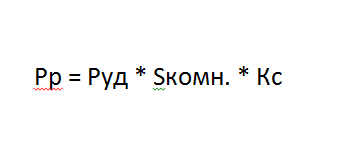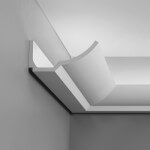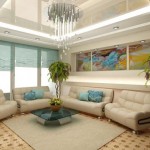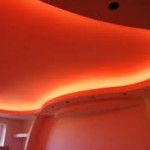How to make LED lighting in the house and apartment?
LED lighting has appeared on the market of electrical goods relatively recently. In this short period of time, LEDs quickly became sales leaders, displacing classic Illich lamps, as well as halogen and fluorescent light sources.
Product advantages are as follows:
- high energy-saving properties (we can say that the highest among all existing light sources);
- do not pollute the environment (unlike mercury lamps);
- service life can reach up to 15 years (one of the most important advantages);
- high light output;
- easy installation and maintenance of the lighting system;
- have minimal heat transfer (unlike incandescent lampsthat turn most of the electricity into heat, not light);
- the case has high strength;
- can be used in places with high humidity and dust.
As for the shortcomings, he alone - too high a price. Personally, our opinion is inclined to the fact that this flaw is not at all convincing. This is due to the fact that the lamp quickly pays for itself due to the high energy-saving properties. Summing up and weighing all the pros and cons, we can say that the advantages of LED lighting for an apartment and a house are much more significant than the cons.
Where is better to use?
Today, the installation of LED lighting can be used anywhere: in a house, apartment, landscape design, car decoration, and even in industrial premises. As for the interior, LED lighting is best installed in the living room, in the hall, in the bedroom and in the kitchen.
The living room (in fact, like the hall) is a place for friends, as well as a room where you can sit and watch TV. As a rule, the interior of the living room includes various "highlights" - niches in the wall, cabinets with accessories, etc. Here they can be beautifully lit with LED strip.
In the kitchen, in fact, as in the bedroom, it is very often used concealed ceiling lighting. To install it, you need to make a cornice, and then put the same LED strip inside.
As for the corridor and the bathroom, here it is necessary install spotlights. The tape in this case is not very appropriate to apply.
Basics of calculation
Before making LED lighting in an apartment or house, it is necessary to make the appropriate calculations in order to find out the quantity and type of the required material. When replacing fixtures (for example, you decide to replace halogen lamps LEDs) completely change the wiring does not make sense. Usually replacement is done if the new equipment is more powerful than the old, and in our case, the diodes will consume even less electricity. This is good, because there is no need to exercise cable section calculation, as well as acquire new wiring elements. All you need is to calculate the power of the tape, which will be enough for the room, or choose the right number of spotlights.
We draw your attention to the fact that today there are many free software for calculating LED lighting in an apartment and a country house. They include many criteria for calculating the required luminous flux: the area of the room, the material and color of the walls, the dimensions and location of the windows, etc.
If you want to manually carry out the calculation, then we bring to your attention two stages that make up this event.
Step 1 - Choosing the Right Power Supply for the Ribbon
For the LED strip to work, you need a power supply (PSU) through which current will flow from the network.
To correctly choose power supply To install LED lighting in an apartment, you first need to calculate the power consumption of the tape. Each product has its own characteristics: operating voltage, length, power consumption 1 meter length. We need to know the total power of the product of the nth length.
For example, you bought a 7-meter tape with a power of 7.2 W / m. Usually it is sold in cassettes of 5 meters. In total, we should have 2 pieces of 5 meters, one of which will need to be shortened.
We draw your attention to the fact that the LED strip can be cut to the required length, but this must be done in special places. Most often, the manufacturer provides places for cutting after every 3 LEDs.
Total, the total power of the product will be:
Total = P * L = 7 * 7.2 = 50, 4 W.
For the normal functioning of the power supply, a power reserve (at least 20%) must be provided. Total: 50.4 * 1.2 = 60.5 watts. In the store you need to buy a power supply with a capacity not less than calculated.
Step 2 - Calculate the number of fixtures
If you decide to use classic spotlights in the apartment, then it is also necessary to carry out settlement work. To do this, you only need to know the power of the lamp, which is always indicated on the package.
The formula for the calculation will look like:
Where: Ore - the specific power of the lamp (for residential premises with LED lighting is approximately 2.5 W per 1 square meter);
S is the area of the room;
Ks is the demand coefficient, in our case 1.
Total, if you decide to calculate the LED lighting for the bathroom, then you need 2.5 * 6 (approximate area of the bathroom) and 1, which will result in 15 watts. Next, you need to determine the number of fixtures. There is already everything for your taste: buy 3 to 5 watts, or 1 to 15 watts.
Schema creation
That's all, simple. The number of required fixtures has already been calculated. Now you need to choose the location of their installation. To do this, it is recommended to use a photocopy of the floor plan, which shows all the exact sizes of the rooms, the installation location of windows and doors.
To your attention an example of a lighting scheme in an apartment:
About, how to calculate the number of spotlights, we told in a separate article. After creating the scheme, you need to buy all the elements electrical wiring and proceed to installation.
Installation
Installing LED lighting in an apartment and a house is not difficult. The manufacturer has provided such a product design that allows you to quickly and effortlessly install fixtures with your own hands.
Tape mount
One side of the LED strip is self-adhesive. All you need is to create a ledge under the hidden illumination, and place the tape in it, pasting it onto the prepared surface.
The ledge for LED lighting can be made of drywall, or it can be bought ready-made - polyurethane.
It should be noted that the power supply inside the eaves is better not to put, because it heats up and can cause danger.If the LED strip is short and of small power, then the PSU can be put inside the box without hesitation.
We also recommend that you watch a visual video tutorial on installation:
Lighting fixtures
Spotlights have a fairly simple and convenient design, which is represented by a round casing with bursting legs.
To make the LED lighting in the apartment yourself, you need to cut a round hole in the plasterboard ceiling (or wall), lay the wiring to it in a hidden way and connect it to the lamp. We recommend using the method of connecting wires - terminal blocks WAGO. They are inexpensive and securely fasten even wires of various cross-sections and core materials.
- Stroba in drywall
- Wiring Terminal Blocks
- Electric installation work
After connecting the wires to each other, you can install the product in the seat. To do this, the paws are pressed by hand and the body is neatly placed in the so-called strob. In the end, you need to implement light switch connection. Do this only when the power is off!
Photo examples
We bring to your attention a photo of the idea of LED lighting of a house and apartment:
We hope that these examples inspired you to make your own LED lighting in your apartment.
Related materials:






























